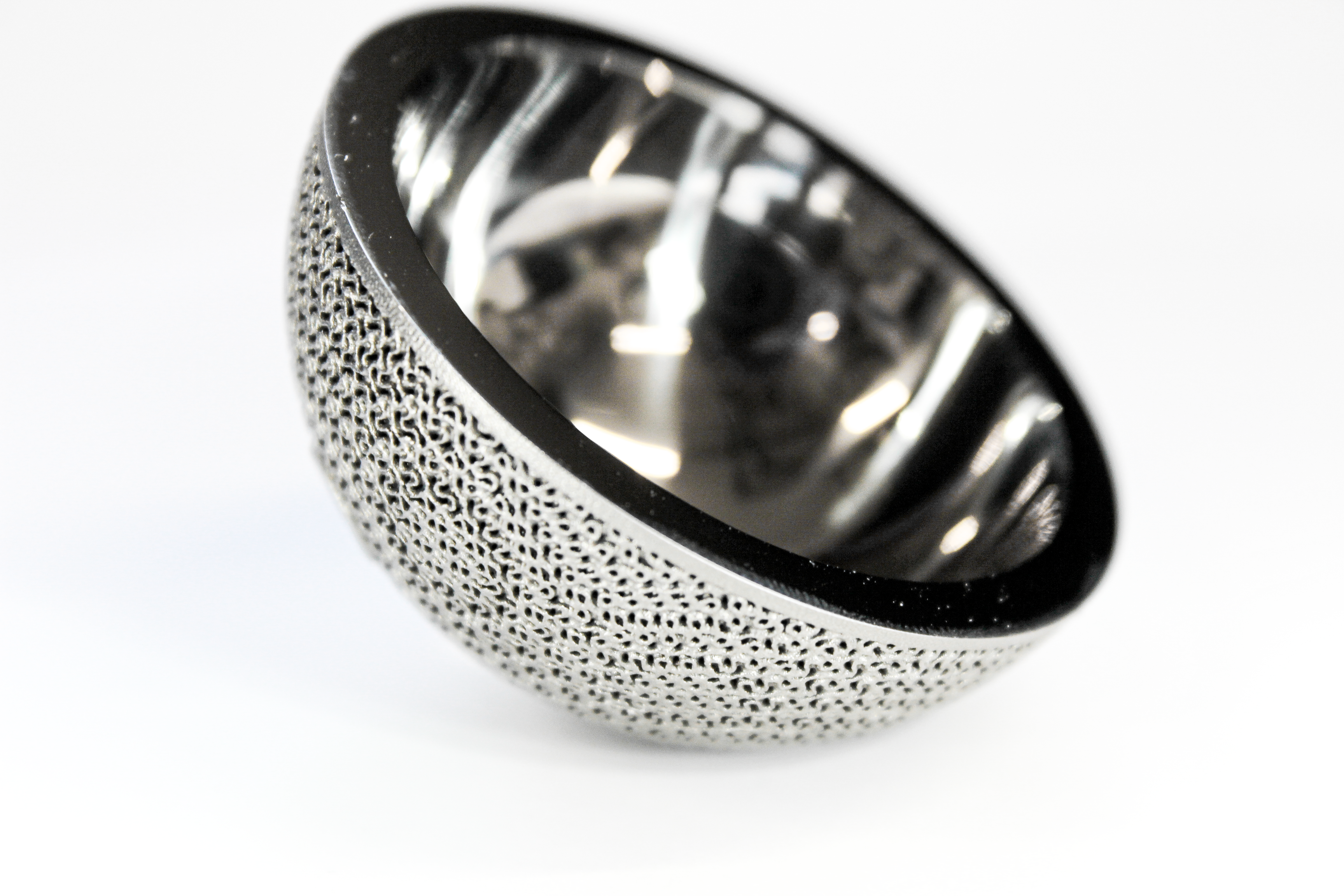Surface of Amorphous Components
From high-gloss to deliberately structured, amorphous alloys are broadly positioned
Amorphous alloys offer a diverse range of properties and capabilities, making them highly versatile for a variety of applications. Their surfaces can be engineered to exhibit a wide spectrum of finishes, ranging from highly shiny to deliberately structured, all while maintaining high accuracy and exceptional quality.
One of the standout features of amorphous alloys is their excellent wear resistance, making them an ideal choice for components subjected to demanding mechanical conditions. Furthermore, these alloys can serve as certified food safe contact material and possess skin-friendly anti-bacterial properties.

Manufacturing components with amorphous alloys allows for the adjustment of surface roughness, and their compatibility with 3D-printing and injection molding processes ensures that tight tolerances can be achieved, even for complex geometries and miniaturized designs. The inherent high hardness of amorphous alloys significantly enhances their resistance to abrasion, while their high elasticity enables them to undergo elastic deformation and subsequently recover their original shape. This unique combination of properties allows for the attainment of highly smooth surfaces, which in turn reduces friction and contact between mating surfaces, resulting in enhanced wear resistance.
In addition to their mechanical properties, amorphous alloys exhibit low thermal conductivity, contributing to a good haptic experience and making them suitable for applications where thermal management (e.g. tool inserts) and tactile sensation are a consideration.
The exceptional properties of amorphous alloys make them an excellent choice for applications requiring precise surface finishes, wear resistance, and compatibility with complex manufacturing processes, while also offering good haptic qualities and thermal management capabilities. Furthermore, the ability to apply post-processing treatments expands the range of applications in which amorphous alloys can excel.



